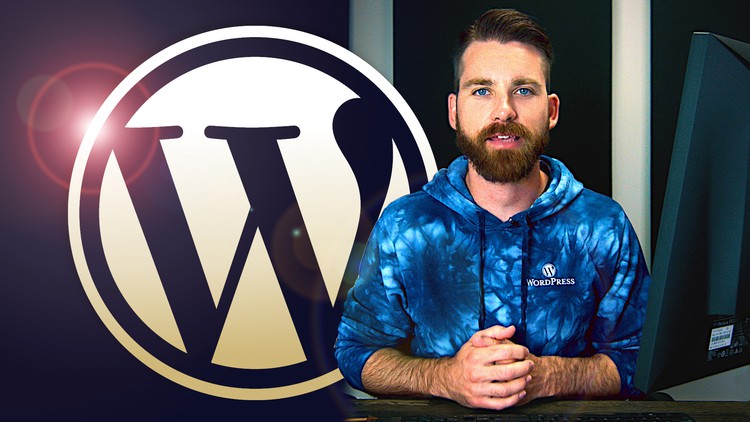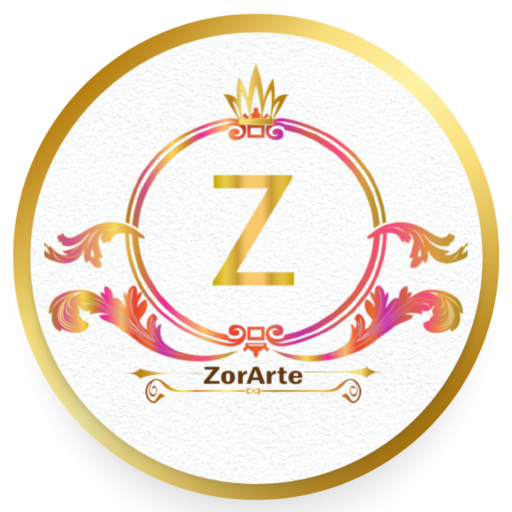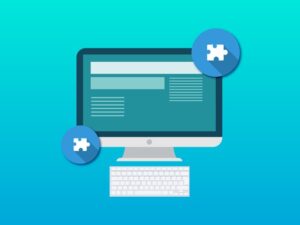WordPress Simplified: How to Build Powerful Websites + SEO
- Description
- Curriculum
- FAQ
- Reviews
- Grade

The COMPLETE WordPress course for beginners to help you design a professional website from start to finish in 2024 using block themes and the built-in block editor.
No premium third-party themes or website builders.
No coding.
THIS is simple web design for the modern age – and it’s all here in this course!
Join 600+ students in learning how to design professional WordPress websites that look beautiful and are optimized for search. It’s time to empower your inner web designer and supercharge your online business with the world’s most popular CMS (Content Management System).
Learn how to plan, set-up, and design your website using WordPress. This beginner-friendly course will walk you through everything you need to know to get your website up and running, while showing you how to design and publish a professional website without needing to hire a web developer. The best part? There’s no coding required!
You’ll have the option to install WordPress without purchasing a domain or hosting – making it easy to follow along with each lecture using a free test site, or install WordPress through a third-party hosting provider and publish your website online once you’ve completed the design.
This course always includes the latest version of WordPress, WordPress Themes, and WordPress Plugins, so you’ll be learning with the most up-to-date information in 2024 and beyond.
You’ll design a COMPLETE website, from start to finish, with my step-by-step lectures that walk you through all the important web design, content creation, and publishing features found in WordPress.
Additionally, you’ll learn the same expert SEO techniques I used to rank my website on page 1 of Google for over 800 keywords. More page 1 rankings simply means more traffic to your website, and thus more potential sales for your online business. These SEO strategies have helped my business reach 1,000,000 annual site visitors in back-to-back years.
I show you everything I’ve learned in my 10+ years using WordPress for my online business and for designing websites for my clients.
Upon finishing this course, you’ll have a professional website that’s published and ready for site visitors!
In This 2024 WordPress Course, You’ll Learn:
-
Basic and Advanced WordPress Concepts and Terminology
-
How to Download & Install WordPress On a Host (like SiteGround, GoDaddy, or Bluehost), or On Your Own Computer
-
Proper Planning Techniques to Set Your Website Up for Success
-
General UI/UX Design Concepts (User Experience and User Interface)
-
The WordPress Dashboard – the control center of WordPress!
-
The Site Editor for Designing Templates in WordPress 6.0 and Newer
-
The Block Editor (a.k.a. the Gutenberg Editor) for Designing Webpages Using Block Themes
-
Patterns and Synced Patterns for saving time while creating and editing webpage layouts
-
-
Full Site Editing
-
Setting a Static Homepage
-
How to Design Important Webpages from Start to Finish for a complete 5-page website
-
Important Concepts and Tips for WordPress Plugins
-
Why Plugins Are Important for Your WordPress Website
-
How to Install and Set Up WordPress Plugins
-
SEO and Digital Marketing Tips and Techniques to Help Your Site Get More Traffic
-
Updates from WordPress 6.1, WordPress 6.2, WordPress 6.3, and WordPress 6.4
-
Everything You Need to Know to Design a Website From Start to Finish
-
Security Tips to Make Your WordPress Website More Secure
-
And more!
Here’s what current students are saying about the course:
“I really got a lot out of this course. It was a bit of a refresher for me as I used WordPress about 10 years ago. The lecturer’s voice and the audio in general is very clear and the talking is always relevant to what is happening, no mumbling or going off track. The lectures proceed at a reasonably fast pace, you can of course stop the video occasionally to keep up. The visuals and descriptions are good. You will build a website, step by step alongside the lecturer. I felt I learned quite a bit in terms of using WordPress, using the block editor, creating a website and general knowledge about the whole process. Well worth my time.”
-Terrance D.
“With an engaging delivery, Michael leads wonderfully through this course.”
-Terry B.
“This course was precise and understandable for anyone wanting to learn how to set up a website. Michael is a great instructor and looking forward to seeing the upcoming updates on this course.”
-Cecily M.
If you’ve always wanted to design your own website from scratch, but never quite knew the steps and never wanted to learn coding, this is the perfect course for you! Consider it a beginner’s guide to WordPress with all the essential basics.
Whether you own a small business, run a side hustle, or simply want a personal website to showcase yourself, WordPress is a great platform for building professional sites in relatively short amount of time. By the time you’ve finished this course, you’ll feel comfortable navigating WordPress and its many useful features.
WordPress is an extremely popular free and open source Content Management System (CMS), and I hope you’ll enjoy using it as much as I have over the years! You can ask me any questions you may have as you work through the course.
Don’t love the course? It comes with a MONEY BACK GUARANTEE! That means if you don’t like the course for any reason, you can get a full refund within 30 days of your initial enrollment.
Thanks for your interest, and if you decide to enroll – I’ll see you in there.
-
1What is WordPress?
In this lecture, I start off my WordPress course by defining the all-important question: What is WordPress? Get an introduction to the free and open source CMS for designing and managing websites!
-
2Choosing a WordPress Install Location
The next step in your WordPress journey is deciding where you'd like to install the WordPress CMS. I cover the three main locations for a website installation: your personal computer, a third-party host, and a third-party server. I also discuss which one I recommend based on your level of technical expertise and other factors like cost and convenience.
-
3Section 1 Glossary of Terms
This lecture contains terms I used throughout this first section of the course, which you can view at any time for your own reference.
-
4BONUS: WordPress Designer Flow for Creating a New Website
In this lecture, I help you understand the full process of creating a website with WordPress by presenting a "designer flow." From purchasing your domain and hosting, to publishing your site online, and everything in-between, I cover path you'll take to get your website designed and ready for site visitors.
-
5Setting Up Your Domain and Database
If you decide to self-host your WordPress installation on your personal computer, you'll need to set some things up to make sure everything works properly. In this lecture, I walk you through everything you need to know, step-by-step, to accomplish setting up your domain and database.
-
6Installing the WordPress CMS
Now that you have your domain and database set up, you can install the WordPress CMS on your personal computer. I walk you through the process in this lecture, showing you a detailed step-by-step guide to ensure everything runs smoothly.
-
7Self-Hosting WordPress Quiz
-
8Choosing the Perfect Domain Name for Your Website
A domain name is one of the most important features of your website as it's how everyone finds your site. Choosing a domain name requires some thought and important decision making. In this lecture, I cover some important question to ask yourself and answer to ensure you choose a domain name that's right for your site.
-
9How to Install WordPress on a 3rd Party Host
In this lecture, I cover the process for finding a third-party host to host your WordPress website. I discuss companies I've used in the past as third-party hosts, plus talk about costs and installation. Some commonly used WordPress hosts include GoDaddy, Bluehost, SiteGround, and Host Gator, though there are plenty more.
-
10Connect WordPress Host to an Existing Domain Name
If you have hosting purchased through one provider, and a domain name through another provider, this video will show you how to connect the two services to properly display your site. I use Siteground and GoDaddy as the service providers for this video.
-
11Third-Party Hosting WordPress Quiz
-
12Introduction: 5 Important Questions When Planning Your WordPress Website
Before you dive in to the process of building your website, it's important to do a little planning ahead of time to make sure you know what it is you want out of your site. Planning will make the overall design process smoother while helping you produce a better website. In this lecture I introduce the 5 questions you should be asking yourself when planning your WordPress site.
-
13Who Is My Target Audience?
When designing a WordPress website, it's important to understand the people that will be visiting your site. You can then gear your content towards this audience, which will help improve your site's performance and thus the performance of your business. In this lecture, we answer the important question: Who is my target audience?
-
14What Is My Website's Main Goal?
What is the main goal you'd like your site to accomplish when visitors land on it? Do you want them to purchase a product? View blog posts? Sign up for a newsletter or contact your business? In this lecture, I explore the important planning question: What is the main goal of my site?
-
15What Features Does My Website Need?
Now that you understand the main goals you want your site to accomplish, you'll need to consider what features your site needs to accomplish these goals. In this lecture, I walk you through the brainstorming process for determining the best features for your WordPress website.
-
16Create Your Own Site Funnel
-
17What Pages Does My Website Need?
Now that you know the main goals of your site and the features you'll need to accomplish those goals, it's time to figure out what pages you'll need on your site. The right pages can ensure users find the information their looking for, while simultaneously ensuring your business conveys the information it wants to convey. I discuss common pages found on WordPress websites and how to figure out what pages are right for your site.
-
18What Do I Want My Site to Look Like?
Perhaps the most important planning question of all is, "What do I want my site to look like?" In this lecture, I help you determine the best fonts, colors, and other visual styling elements for your WordPress site to ensure you create a great looking site that matches your branding or vision.
-
19WordPress Planning Review
In this lecture, I review the best practices we covered throughout the planning section to help you create better websites.
-
20WordPress Planning Quiz
Test your knowledge of the best practices and common terminology for planning a WordPress website.
-
21Answer the 5 Planning Questions to Help You Build a Better Website
-
22Home Page Wireframe | Part 1
In this lecture, I dive into the all-important process of drawing your website wireframes to give you a rough outline of your website design. I start this series of with the "Home" page, showing you various techniques for laying out your page and linking to other pages of your site. This is part 1 of 2 for the Home page.
-
23Home Page Wireframe | Part 2
In this lecture, I dive into the all-important process of drawing your website wireframes to give you a rough outline of your website design. I start this series of with the "Home" page, showing you various techniques for laying out your page and linking to other pages of your site. This is part 2 of 2 for the Home page.
-
24About Page Wireframe
Let's now move on to planning out your About page layout by drawing a wireframe. We'll include important design aspects and label each element to help us out later in the course.
-
25Portfolio Page Wireframe
With our first two pages drawn, we'll now draw a website wireframe for our Portfolio page. This page will contain examples of our work, so we'll need to ensure we have spaces for images and text.
-
26Blog Page Wireframe
Next up, I'll show you how to draw a wireframe to help you plan the layout of your Blog page. This WordPress page will host all your blog posts or articles on your site (and is a very important page for SEO!).
-
27Contact Page Wireframe
The last wireframe we'll draw is for our Contact page. As with all our website's pages, we'll ensure our web design contains links to the other pages of our website to improve the user experience.
-
28Draw Your Own Website Wireframes
-
29Logging In to WordPress
In this lecture I show you how to log in to the back-end of WordPress, which is where you'll be making edits to your site and creating custom designs.
-
30The WordPress Admin Toolbar
The very first element you'll notice when you login to the backend of your WordPress site is the Admin Toolbar. This feature, located along the top of the WordPress interface, contains several important features for navigating the backend of your site, creating new content, and more.
-
31Adding or Changing Your Admin Profile Photo (Gravatar Image)
In this WordPress customization lecture, which is a continuation of the WordPress Admin Toolbar lecture, I show you how to change your Gravatar image - which is associated with your WordPress admin account.
-
32The WordPress Admin Area Main Navigation
In this lecture I cover WordPress's "Main Navigation" for the Admin Area. This feature will be your primary means for navigating around the backend of your site. It allows you to access the various work areas for making general changes to your site (like adding pages, adjusting plugin settings, or customizing your theme). Let's explore this important feature!
-
33WordPress Work Areas
In this lecture I explain the "work areas" in WordPress. Each page in the backend of the WordPress Admin Area has a work area for performing various functions. For example, the "Pages" work area allows you to view all your site's webpages in a list view, add or remove pages, and edit existing pages. The "Themes" work area lets you view all the downloaded themes for your WordPress CMS. and finally the "Users" work area lets you view user accounts created for your site and edit their settings.
-
34WordPress Layout Quiz
Test your knowledge of the different areas and features of the WordPress admin area layout!
-
36The Block Inserter
In this lecture, I provide an introduction to the "Top Menu" section of the Block Editor. Then, I cover the very important "Block Inserter" feature for adding blocks to your webpage. Blocks are a vital method for adding elements to your webpages without needing to code. They are highly customizable to help your site look exactly how you envision.
-
37Edit & Select Tools
Next up, I cover the "Edit" and "Select" tools found in the Top Menu of the Block Editor. These settings allow you to change how your mouse pointer interacts with blocks on your webpage. Plus, I discuss how to easily cycle between these features using shortcut keys.
-
38Undo/Redo Features
Did you make a mistake while designing your website? Thankfully, the Block Editor includes "Undo" and "Redo" icons to easily go backwards or forwards in your workflow. I also discuss shortcut keys for these tools.
-
39Save Drafts & Preview Your Webpage
In this lecture, I cover how you can save page drafts inside the block editor to ensure you don't lose your work and can pick up where you left off in new sessions. I also show you how to preview what your webpage will look like on the web, as well as on different devices like a tablet or mobile phone.
-
40Document Overview + WordPress 6.2 Updates
WordPress 6.2 rolled out some updates to the Top Menu, including merging the "Document Details" with the "List View" feature of the Block Editor. The list view allows you to view and arrange all blocks on your webpage. On the other hand, the document details give you a word count and character count, as well as an estimate on how long it will take a site visitor to read your page.
-
41Publish & Schedule Your Pages
In this video I show you the publishing and scheduling features in WordPress's Block Editor. With the "Publish" button you can set your site live on the web, and with the "Schedule" button you can schedule your page to be released at a later date.
-
42Options for Customizing the Block Editor (Plus Section Recap)
The "Options" in the Top Menu allow you to customize the Block Editor and change settings to speed up or improve your workflow.
-
43Page Settings Sidebar - Part 1
In this lecture, I cover the "Page Tab" of the Page Settings Sidebar located inside the Block Editor. This section of WordPress gives you access to important page features like visibility (whether the page is private, public, or password protected), scheduling (for when you want to publish your page at a specific day and time), and assigning a page author. From this section of the WordPress Block Editor you can also choose from your pre-made page templates to help design your site faster. This lecture is part 1 of 2 lectures on the Page Tab.
-
44Page Settings Sidebar - Part 2
In that part 2 of 2, I show you how to upload a featured image to your page (used on social media), as well as how to enable or disable page comments and how to preview your web design.
-
45WordPress 6.1 - Page Settings Sidebar Updates
In this lecture, I discuss the updates made to the Block Editor's Sidebar Settings in WordPress 6.1 or newer. The changes are mostly related to the layout or organization of certain items in the Page Tab of the Page Settings Sidebar. In other words, some items in the Page Tab have been reorganized or moved to a new location.
-
46The "Content Area" - Inserting Blocks
This lecture covers the "Content Area" of the Block Editor - a crucial feature of WordPress where you can design your website directly on the page WITHOUT needing to code. This area of WordPress is where you can add blocks to your page, style them, rearrange them, or delete them.
-
47The "Content Area" - The Block Toolbar
Time to learn about the "Block Toolbar!" This feature is located above whatever block you are actively editing, and provides quick links to block editing features. This is yet another code-free design tool that helps you design a website using only on-screen controls, and without needing any developer experience.
-
48Block Settings Sidebar - Part 1
In this lecture I discuss the "Settings Sidebar" for the WordPress Block Editor, which contains various settings that allow you to customize your blocks when designing your site. In Part 1, I discuss the discuss the more design-focused features of this sidebar using the Cover block as an example. I also highlight a new feature introduced in WordPress 6.2 - the "Styles" tab.
-
49Block Settings Sidebar - Part 2
In this lecture I discuss the "Settings Sidebar" for the WordPress Block Editor, which contains various settings that allow you to customize your blocks when designing your site. In Part 2, I discuss adding padding to your blogs, as well as setting up alt tags for SEO and anchors for in-page linking.
-
50WordPress 6.2 - Block Editor Updates
WordPress release WordPress 6.2 with some incredible new updates to the Block Editor! I cover these latest updates in this video, including an improved Block Inserter with newly organized tabs, a drag and drop feature for adding Openverse images to your site (WordPress's free and freely licensed stock image website), and some new UI features. WordPress appears to be heading in the right direction with these latest changes.
-
51Block Editor Quiz
Put your knowledge of the Block Editor to the test with this quiz!
-
53Templates (Introduction)
Templates are a WordPress styling feature that let you pre-design page layouts to quickly access for multiple pages across your site. Templates are a handy feature because they ensure design and styling consistency across your site. WordPress's Site Editor makes it easier than ever to create Templates from scratch.
-
54Template Parts (Introduction)
In this lecture I provide an introduction to Template Parts. Common examples of Template Parts include the Header and Footer found in your site's Templates. Multiple Template Parts make up a Template, which creates a granular site editing experience for WordPress.
-
55Create a Custom Template Part (Header)
Now that you've been introduced to Template Parts, lets dive in to customizing your template parts! I'll show you how to create a custom design for your site's header to match your branding and improve the functionality of this important section of your site.
-
56Styles - Intro to Styles & "Typography" Styles
Next up, we'll discuss the "Styles" feature found inside the Site Editor. Styles allow you to set common fonts, colors, and layout characteristics across your site. I'll cover the "Typography" section of Styles for this lecture.
-
57WordPress 6.1: Typography Styles Updates
In this lecture, I cover the latest updates made to the Typography Styles section for WordPress 6.1! With these WordPress updates, you can now edit the font style, size, and colors - all within one easy-to-access location.
-
58Styles - "Color & Layout" Styles
The next features for Styles inside the Site Editor are the "Colors" and "Layout" features. Colors allow you to set site-wide color schemes for easy access while designing your site. You can use colors from your branding guidelines, or simply select colors you like from the available color tools. I then cover the "Layout" section of the site editor.
-
59WordPress 6.1: Colors Styles Updates
Learn about the latest updates to the Colors Styles in WordPress 6.1! WordPress updated its Color Styles options to include more customizations for your typography, buttons, and blocks. For example, you can now customize the color of your site's links - including the "hover" cover (when someone hovers their mouse over the link).
-
60WordPress 6.1: Layout Styles Updates
In this lecture, I cover the new features found in the "Layout" section of the Style Editor for WordPress 6.1 (released in 2023).
-
61Styles - "Block" Styles & Recap
The last area I'll discuss for the Site Editor is the "Blocks" area for customizing the styles or settings of blocks. Blocks are used to design all the elements of your site and site pages, so this feature is really handy for saving the settings you want to use for commonly used blocks. I then recap the Site Editor to reinforce what you've learned in this lecture.
-
62Site Editor Quiz
Test your knowledge of the Site Editor's features with this quiz!
-
63WordPress 6.2 New Feature: Style Book
WordPress 6.2 introduces a brand-new feature, the "Style Book," that allows you to view and edit the styles of all elements and blocks across your entire site. I cover where to find this new feature and how to use it to make your site editing experience more convenient and powerful!
-
64WordPress 6.3 Site Editor Updates
Check out the revamped Site Editor for WordPress 6.3, which includes a new UI and more ways to make site-wide changes to your website.
-
65Introduction to Homepage Design
A Homepage is arguably a website's most important page, as it's often the first page site visitors see when landing on your website. In this section of the course, I'll show you how to design your home page from top to bottom, plus show you how to set your homepage to display properly in WordPress.
-
66Hero Image + WordPress 6.3 Updates
If the Homepage of a website is the most important page, then the "Hero Image" on the homepage is perhaps the most important element of a website. That's because this design element is the first thing people see when they land on your homepage. In this lecture, I show you how to use the WordPress Block Editor (also known as the Gutenberg Editor) to design a full-width hero image with parallax scrolling.
-
67Services Section
The next design element for the home page is the "Services" section. For this section, I'll show you how to add multiple columns to a single section. Plus, I show you how to insert images, text, and buttons to your site, and link these elements to the appropriate pages. All using blocks inside the Block Editor and no coding!
-
68Image Divider
In this lecture, I show you how to add a simple full-width image divider to separate content on your home page. I also show you how to add a small caption to the image, while showing off more features in the WordPress 6.0 Block Editor.
-
69Latest Posts Block & Intro to Adding Blog Posts
We'll now move on to adding a "Latest Posts" section to the homepage to showcase all the latest blog posts we've published on our site. But, wait, we don't have any blog posts on our site... Aha! I'll also be introducing you to adding posts to your site - a feature that's made WordPress famous over the years.
-
70Customizing the "Latest Posts" Block
In this lecture, I'll show you how to customize the styling of your Latest Blogs list to include photos and more stylistic elements for headings and text.
-
71Contact Section
The last design element for the homepage before we reach the footer is the "Contact" section. This section will allow users to easily navigate to the Contact page of our site, where they can email the business or give it a call. I will show you how to design the Contact page in a future lecture.
-
72How to Set a "Static" Homepage
Since WordPress can act as a blog or a professional website, it comes standard with an option to set your homepage as a "Latest Posts" page or as a "Static" homepage. For traditional websites, it's best to have a static homepage that can be custom designed how you want it. In this lecture, I show you how to set your newly design homepage as a static homepage in WordPress 6.0 (it's a little different than it was in previous versions).
-
73Insert Your Custom "Header"
In this lecture, we'll return to the Site Editor by creating a new page template from inside the Block Editor. I'll then show you how to further customize your site's header to remove unwanted default elements like the page title and separator that come with the Twenty Twenty Two theme.
-
74Customize Your Site's "Footer"
In this lecture I move on to customizing our site's footer and copyright section from inside our homepage page template using the Site Editor. I show you how to create a footer with multiple columns that include a site logo, page links, latest posts, and a search bar.
-
75WordPress Homepage Design Quiz
-
76Design a Hero Section with Columns
In this lecture we move on from the homepage and begin designing the other pages of our site! I show you how to design an "About" page to tell site visitors about your business or project. I start this series of lectures off by showing you how to design the "Hero" section for the top of the page using the Block Editor. I also show you how to add columns to your hero section to create three separate sections for content, as well as how to nest columns within a column for even more customization. Finally, I show you how to add a "page jump" to your buttons so that you can link to content within the About page.
-
77About Us Section
For the next design section on the About Page, I'll be showing you how to create a "Who We Are" section that includes multiple columns, a title, and some text to create a nice separation between the hero header and the "What We Do" section (coming up next).
-
78Services Section
In this lecture I show you how to design the "What We Do" section of the page, also called the "Services" section. In this section, we'll be adding a section title and separator along with 3 rows - each containing an image, paragraph text, and a button. You'll learn how to combine many blocks into a group, how to add background colors to individual sections, plus how to duplicate and rearrange entire block groups. This video is part 1 of 2.
-
79Duplicate & Style Block Groups | Services Section Part 2
In this lecture I show you how to design the "What We Do" section of the page, also called the "Services" section. In this section, we'll be adding a section title and separator along with 3 rows - each containing an image, paragraph text, and a button. You'll learn how to combine many blocks into a group, how to add background colors to individual sections, plus how to duplicate and rearrange entire block groups. This video is part 2 of 2.
-
80Add Anchor Links to Buttons
Next up, I show you how to link to internal sections of a page by using a feature called "Anchor Links." These are very useful for improving the user experience of your website by allowing users to "jump" to the section of the page they want to view with a single click.
-
81Using Reusable Blocks (Synced Patterns) to Insert a Contact Section
It's time to cover Reusable Blocks! This handy WordPress 6.0 feature lets you save block areas to reuse at any time throughout your site. Similar to templates, Reusable Blocks will update site-wide when you make a change to any one instance of that Reusable Block. This is handy for saving time when you have the same block setup across multiple pages.
-
82Adding an Image Gallery
It's now time to move on to the Portfolio page, where you can upload image galleries to your website! In this first of 3 lectures, I'll show you how to add your first image gallery to your WordPress site. Plus, I provide tips that improve the performance of your images on the web.
-
83Customizing Your Image Gallery
In this lecture, I show you how to customize the settings of your image gallery to achieve your desired look. WordPress's Gutenberg editor provides tons of built-in customization options for your galleries.
-
84Adding Multiple Image Galleries
In this lecture, I review the process for adding image galleries to your site in order to add multiple image galleries to a single page. I also show you how to complete your Portfolio page design by adding a page footer.












